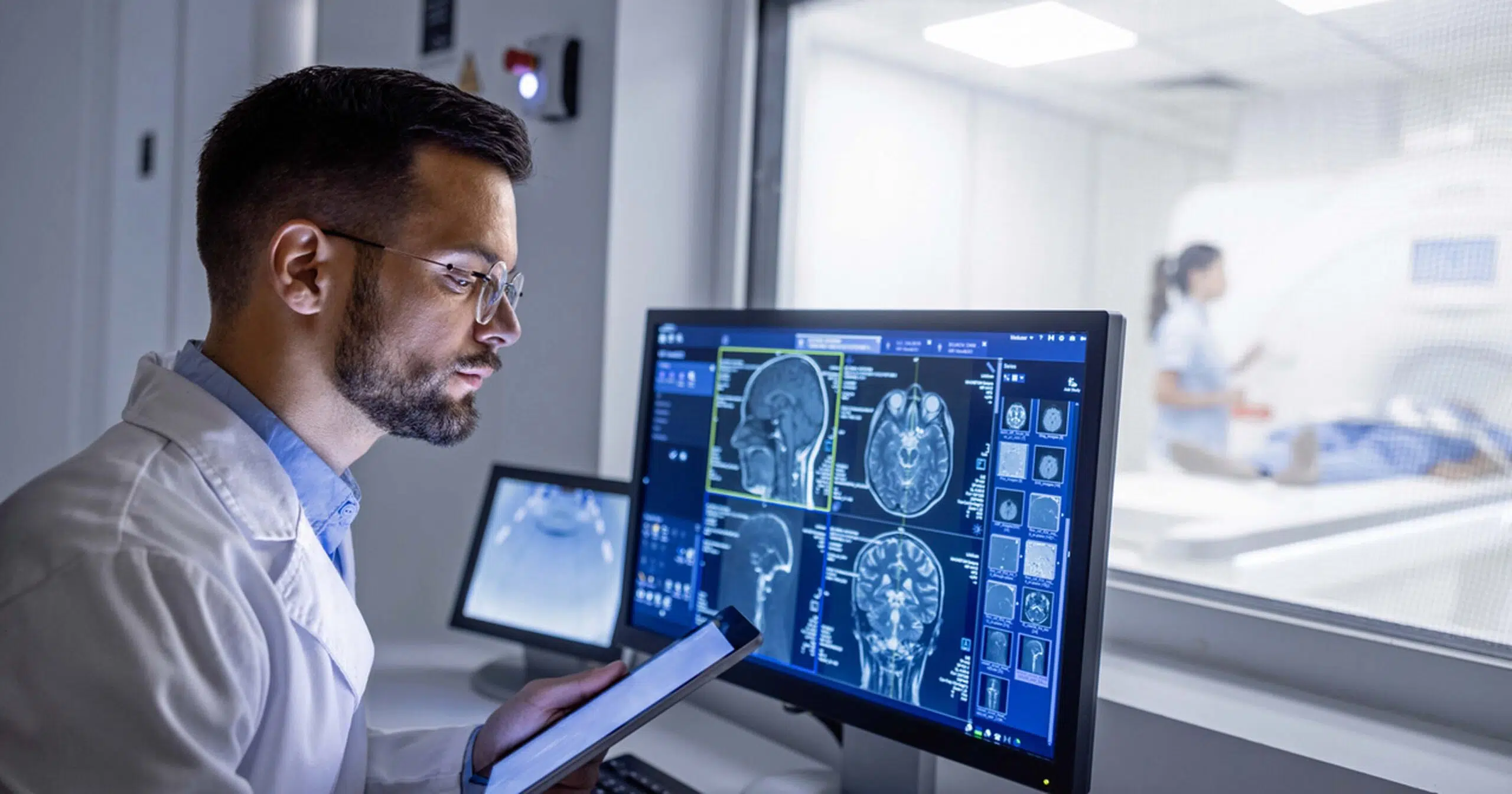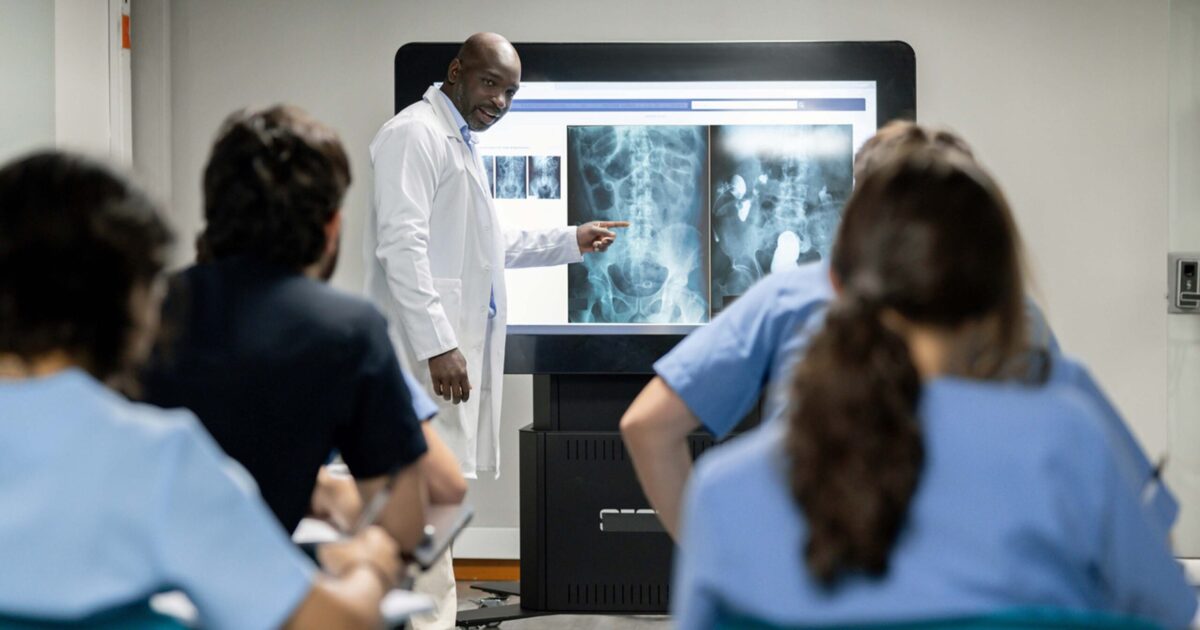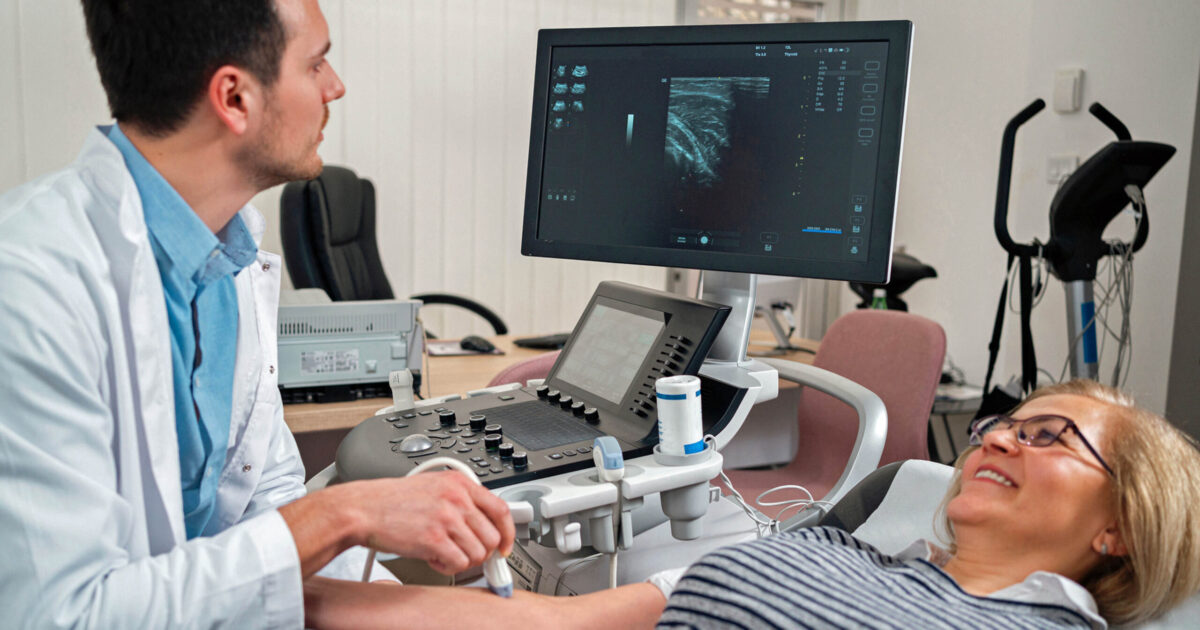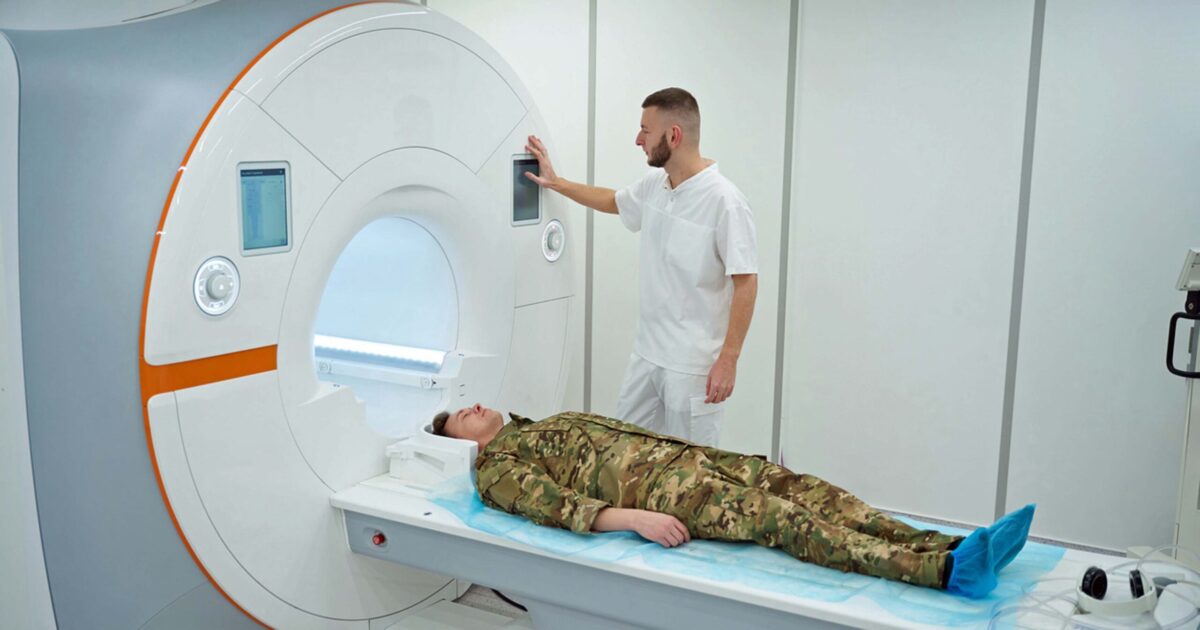Medical imaging plays a critical role in modern healthcare, offering a window into the body’s inner workings that helps diagnose, monitor and treat a wide range of conditions. At Vivian Health, we’re spotlighting three sought-after medical imaging careers that combine rapid job growth with attractive salaries, making them ideal choices for those interested in allied health professions. Read on to explore what it’s like to work as a radiologic technologist, diagnostic medical sonographer and MRI technologist–delving into their unique roles, salary potential and training requirements.
Introduction to Medical Imaging Careers

In medical imaging, techniques such as X-rays, computed tomography (CT), magnetic resonance imaging (MRI), ultrasound and positron emission tomography (PET) allow physicians to assess and diagnose diseases, monitor treatment effectiveness and guide surgeries. While physicians diagnose and treat patients using these images, skilled allied healthcare professionals are responsible for positioning patients and operating the medical imaging technology to create these vital images.
Medical imaging is critical because it provides noninvasive, detailed insights into a patient’s condition. These insights enable early detection and more accurate diagnosis of patients, which improves their outcomes. Healthcare facilities widely use medical imaging to detect cancer, cardiovascular diseases, neurological disorders and musculoskeletal conditions.
In recent years, medical imaging has seen significant growth due to the aging of the U.S. population and injuries due to more active lifestyles. Meanwhile, various technological advances make medical imaging increasingly popular. These advances include artificial intelligence (AI) and machine learning (ML) that offer faster and more precise interpretations and 3D and 4D imaging to improve surgical planning and diagnostic accuracy. Additionally, portable imaging devices and telemedicine have made imaging increasingly accessible in remote areas and in-home healthcare.
Three In-Demand Medical Imaging Careers
Here are three in-demand medical imaging careers that typically require only an associate degree to enter the field. These allied health professions offer competitive pay and strong job security.
Radiologic Technologist

A radiologic technologist, also known as a radiographer, diagnostic radiographer or radiology technologist, is a broad category of professionals who create images of patients’ bodies for diagnostic purposes. A radiologic technologist may specialize in a specific type of equipment, such as X-rays, CT scans, MRIs or mammograms, to ensure the accuracy of the images they produce. They may also specialize by working within a specific patient population, branch of medicine or area of the human anatomy. Radiologic technologists operate imaging equipment, position patients for accurate imaging and ensure patient safety by using protective measures against radiation exposure.
Technologists work closely with radiologists—physicians who specialize in interpreting medical images—to produce high-quality images essential for diagnosing medical conditions. Beyond patient care, technologists are responsible for equipment maintenance, detailed record-keeping and adherence to strict safety and regulatory standards.
Although the terms sound similar, a technologist is different from a technician. A radiologic technologist typically has more advanced training and responsibilities than a radiology technician. Technologists can perform more complex imaging procedures, operate advanced equipment and may take on supervisory roles. Meanwhile, technicians usually handle basic imaging tasks, such as preparing patients and maintaining equipment.
Many states require radiologic technologists to obtain national certification as part of the licensing process. Certifications can also make technologists more competitive for higher-paying positions. The American Registry of Radiologic Technologists (ARRT) offers several certifications. In addition to the Registered Technologist (RT) in Radiography certification, ARRT offers relevant specialization credentials, including the RT in Vascular-Interventional Radiography and Cardiac-Interventional Radiography certifications. Maintaining certification requires ongoing continuing education to keep you updated on current trends and technology..
- Pay Prospects: Based on jobs posted to Vivian the week of September 16, 2024, staff radiologic technologist salaries averaged $41 an hour, though higher pay is possible in certain in-demand regions and subspecialties. The Bureau of Labor Statistics (BLS) estimates that job growth will be 6% for radiographic technologists from 2023-2033, faster than the average of 4% across all jobs.
- Job Growth: Innovative technological advances may continue to propel job growth for radiologic technologists. For instance, the development of portable imaging devices and telehealth allows for greater flexibility in patient care settings, including home care and other locations outside traditional imaging centers. There’s also a growing niche for using hybrid imaging—combined PET-CT or PET-MRI imaging—that’s creating demand for technologists experienced in using multiple equipment types.
- Emerging Tech: Meanwhile, AI is helping to make the processing of radiological images more efficient and can even help physicians by providing a preliminary diagnosis. With these growing efficiencies, imaging demands may spike, which requires more work from technologists, whose roles working with patients and operating equipment can’t easily be replaced with software.
Diagnostic Medical Sonographer

A diagnostic medical sonographer is a healthcare professional who uses ultrasound equipment to create images of organs, tissues and blood flow inside the body. Doctors use these images, also known as sonograms, to diagnose medical conditions. Sonographers work in various specialties, such as obstetrics, cardiology and abdominal imaging, to capture detailed images that help diagnose diseases, monitor pregnancies or evaluate heart function. They’re responsible for positioning patients, operating ultrasound machines and ensuring that the images captured are high-quality for accurate diagnosis.
Sonographers may pursue an associate’s degree, as is required for the other careers in this post. However, they can also take a one-year certificate program if they previously received training in another medical field.
Diagnostic medical sonographers have varying subspecialties, with jobs sorted into roles such as breast sonographer, obstetrics and gynecology sonographer and vascular sonographer, among others. Various medical organizations offer certifications for sonographers wishing to specialize in areas like Advanced Cardiac Sonography or Breast Sonography, or you can earn a more general sonography certification such as Registered Technologist in Sonography.
- Pay Prospects: Sonographer roles regularly appear on Vivian’s Top 10 Highest Paying Allied Health Specialties list. Here’s a breakdown of average staff pay per hour for various sonographer subspecialties based on jobs posted on Vivian during the week of September 16, 2024:
- Registered Ultrasound Tech: $52
- OB/GYN Sonographer: $43
- Vascular Sonographer: $43
- Breast Sonographer: $42
- Cardiac Sonographer: $42
RELATED: The Highest-Paying Sonography Specialties in 2024
- Job Growth: Demand for sonographers is growing, with registered ultrasound technologists appearing on Vivian’s Fastest Growing Allied Health Careers list in 2024. The BLS estimates an 11% job growth for diagnostic medical sonographers from 2023 to 2033.
- Emerging Tech: Advances in technology are driving growth in sonography. Portable and handheld ultrasound devices now deliver high-quality imaging across a wider range of care settings, including remote and home care environments, increasing demand for sonographers beyond traditional imaging facilities. Additionally, telemedicine and remote sonography enable sonographers to perform scans with guidance from off-site specialists.
MRI Technologist

MRI technologists are allied health professionals who operate magnetic resonance imaging equipment as a subspecialty among radiological technologists. This type of imaging uses powerful magnets and radio frequency sensors to create 3D images of the body, including soft tissues that doctors can’t easily analyze using X-rays.
MRI machines require unique patient preparation and safety considerations, which depend on the careful training of the MRI technologist. These include assuring patients’ bodies and the MRI room are free of any metal that could be affected by the powerful magnets.
Being an MRI technologist requires some advanced anatomical skills and injection training because the technologist may have to inject a contrast solution into patients to help detect certain abnormalities. They must also carefully position patients in the machine and secure them from movement to take clear images of the correct areas.
RELATED: What’s the Difference Between an MRI Technologist and a CT Technologist?
MRI Technologists must earn an associate degree in radiologic technology or MRI technology. Both of these two-year programs include clinical experience requirements. A small number of states also require licensure. Earning MRI certification through a program certified by the ARRT, the American Registry of Magnetic Resonance Imaging Technologists or the American Board of Magnetic Resonance Imaging (ABMP) helps MRI technologists become more competitive for job opportunities.
-
-
- Pay Prospects: MRI Technologist jobs paid an average of $51 an hour for staff roles, based on listings that agencies posted on Vivian during the week of September 16, 2024.
- Job Growth: The BLS estimates MRI technologists will see job growth of 8% from 2023-2033.
- Emerging Tech: Tech advancements in MRI technology may help to further encourage demand for magnetic resonance imaging in healthcare. For instance, AI and ML algorithms are being integrated into MRI systems to assist with image reconstruction, reducing noise, optimizing scan parameters and detecting abnormalities. These algorithms can also help streamline workflows by automatically identifying the best images or making preliminary diagnoses, which may help reduce costs and make MRI a go-to tool in more areas of medicine.
-
Another technology that can help reduce MRI costs and thus spur more demand is compressed sensing. Compressed sensing is an advanced mathematical technique that allows for faster MRI scans by capturing less data and reconstructing images through algorithms. This technology significantly reduces scan times, making the MRI process more efficient.
Meanwhile, functional MRIs (fMRI), which measure brain activity by detecting changes in blood flow, are increasingly used in research and clinical settings and can help diagnose epilepsy, Alzheimer’s and neurological/psychological disorders. MRI technologists trained in advanced neuroimaging techniques, such as fMRI, will likely see growing demand, especially as neuroscience research expands and clinical applications for brain mapping increase.
Launch Your Medical Imaging Career on Vivian
Upon completing your training for a career in medical imaging, Vivian can help you find your ideal role. Use Vivian Health’s job search tool to filter thousands of well-paying positions in medical imaging and other allied health professions across the U.S. to find roles that align with your career goals.









